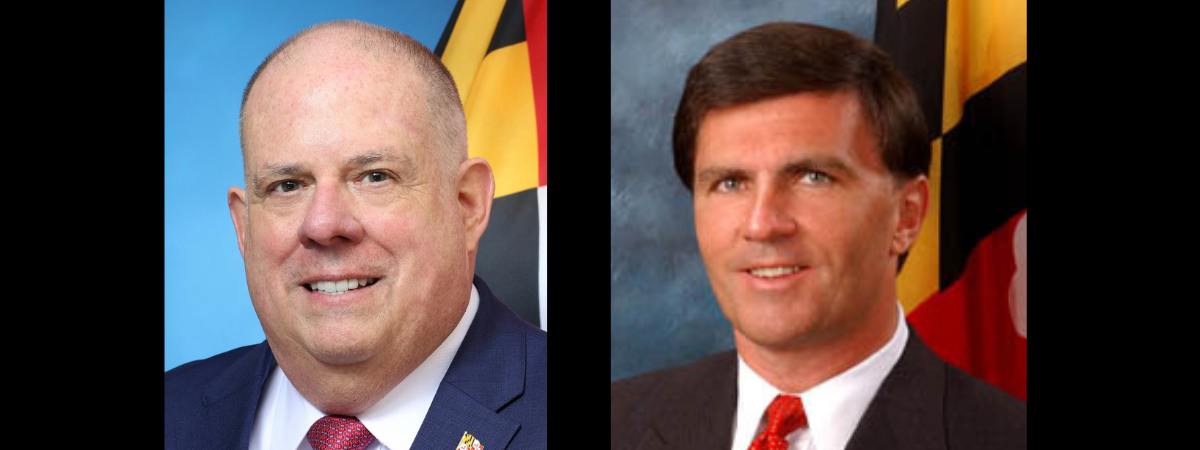Maryland and Abortion

National and State Laws
When the Supreme Court handed down its recent decision on Dobbs v. Jackson Women’s Health Organization, it handed back decision-making on abortion to individual states, saying that “the authority to regulate abortion is returned to the people and their elected representatives.” Fortunately, the Maryland legislature has chosen to keep abortion legal in this state.
The Supreme Court decision does not acknowledge the strong public opinion in favor of abortion. A large majority of Americans support abortion and have supported it since at least 1989. A Gallup poll in May found that 35% of American adults believe abortion should be legal under any circumstances, 50% believe abortion should be legal under certain circumstances, and only 13% believe abortion should be illegal in all circumstances. The Pew Research Center found in their polling of adults in Maryland that 64% thought abortion should be legal and 33% thought it should be illegal.
Even before the Dobbs decision, between 2011 and 2019 there was a national increase in abortion restrictions by various states, including, according to the Guttmacher Institute, parental notification or consent requirements for minors, limitations on public funding, mandated counseling and waiting periods, and “unnecessary and overly burdensome regulations on abortion facilities.” Maryland has opted to expand abortion access rather than restrict it.
Maryland Laws on Abortion
Maryland ranks high among the states that deferred to medical guidance for formulating its abortion legislation. Maryland law has protected the right to have an abortion ever since 1992.
As of July 14, 2022, the state prohibits abortions after the fetus is viable, defined as “when, in a doctor’s best medical judgment, there is a reasonable likelihood of the fetus’ sustained survival outside the womb.” Legal abortions in Maryland are those performed “before the fetus is viable, or at anytime where termination procedure is necessary to protect the life or health of the woman, or if the fetus is affected by serious genetic defect/abnormality.”
The penalty for an unlawful abortion does not apply to a qualified provider “if the decision to abort was made in good faith and in best medical judgment.”
Furthermore, the state legislature passed the Maryland Care Access Act in April this year, to allow a broad range of healthcare workers — nurse practitioners, nurse midwives, and physician assistants — to perform abortions, and allocate $3.5 million dollars to a new program, the Abortion Care Clinical Training Program, within the Maryland Department of Health, to train healthcare workers.
This bill requires the majority of health insurance plans, including private health insurance plans, to cover abortions cost free. This measure covers the costs of abortions because the federal government restructured Title X funds so that they could not be used for abortion services.
The Maryland legislation was enacted with a gubernatorial veto override; Gov. Larry Hogan has refused to release the allocated funds, opting to wait until the legislation requires their release in the next fiscal year.
Some Abortion Facts
The Guttmacher Institute lists some facts and trends surrounding abortion on the national as well as state level:
- Many legal abortions are performed across a broad cross-section of people in the United States, but abortion decreased by 8% between 2014 and 2017.
- In Maryland there was a 7% increase in the abortion rate, though not all abortions that occurred in Maryland were provided to state residents. On the other hand, some Maryland residents may have traveled to another state for an abortion.
- In 2017 there were 1,587 facilities providing abortion in the U.S. That represents a decrease in facilities since 2014. Most abortions nationally were provided at clinics and only 3% at hospitals and 1% in physicians’ offices.
- In Maryland there were 44 facilities providing abortions in 2017, but 71% of Maryland counties had no clinics that provided abortions and 29% of Maryland women lived in those counties.
- Nationally, 89% of U.S. counties had no clinics providing abortions. About 38% of reproductive age women lived in those counties. Of patients who had an abortion in 2014, one-third had to travel more than 25 miles one-way to reach a facility.
- Medication abortion now accounts for more than half of all U.S. abortions.
In summary, Maryland is moderately well-equipped with abortion facilities, in comparison to the nation. Although there is no clinic in most of the counties, abortion by telephone consult and mailing a pill is available statewide. There is no clinic for surgical abortions on the Eastern Shore of Maryland.
Maryland offers legal abortions to women from out-of-state, and abortion providers in the state are foreseeing an increase in demand due to abortion restrictions enacted in many other states. In response, many abortion providers in the state are implementing plans to expand services. Depending on what some other state legislatures do, Maryland could end up being the southernmost state where abortion is legal, and thus become the closest haven for abortion access for many people from southern states where abortion is restricted. The Maryland Care Access Act, originally passed to make it easier for Marylanders to access abortions, will eventually help Maryland abortion providers offer services to people from out-of-state as well.
Sources:
“Where Do Americans Stand on Abortion?” Lydia Saad, Gallup News.
https://news.gallup.com/poll/321143/americans-stand-abortion.aspx
“Views about abortion among adults in Maryland,” Pew Research Center.
https://www.pewresearch.org/religion/religious-landscape-study/state/maryland/views-about-abortion/
“State Facts about Abortion: Maryland,” June 2022, Guttmacher Institute.
https://www.guttmacher.org/fact-sheet/2015/state-facts-about-abortion-maryland
“Maryland House passes abortion rights constitution amendment,” Brian White, March 11, 2022, AP News.
Maryland Abortion Law, FindLaw.
https://www.findlaw.com/state/maryland-law/maryland-abortion-laws.html
Jeanette E. Sherbondy is a retired anthropology professor from Washington College and has lived here since 1986. In retirement she has been active with the Kent County Historical Society and Sumner Hall, one of the organizers of Legacy Day, and helped get highway /historical markers recognizing Henry Highland Garnet. She published an article on her ethnohistorical research of the free Black village, Morgnec.
Common Sense for the Eastern Shore







